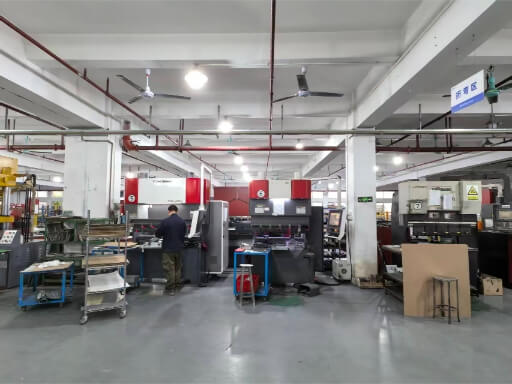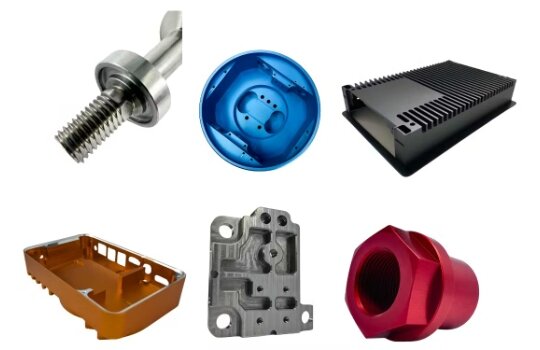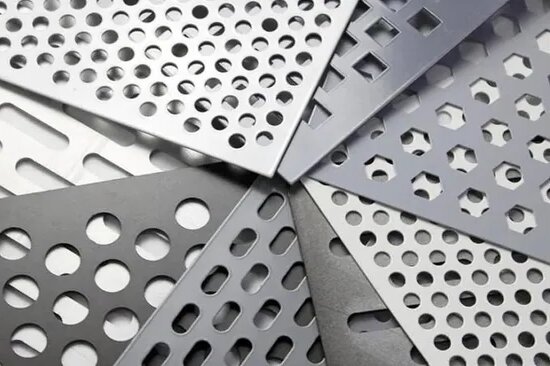Laser cutting is one of the most accurate and flexible methods in today’s manufacturing. It gives clean edges, steady quality, and supports complex shapes. However, these strengths can quickly raise costs if the project setup is not well-planned.
A small cost change on each part can add up during large production runs. The total impact can reach thousands of dollars. The primary task is to understand what factors affect laser cutting costs. Once you know these factors, you can adjust your design, select more suitable materials, and enhance the workflow. These steps help you turn high precision into real savings.
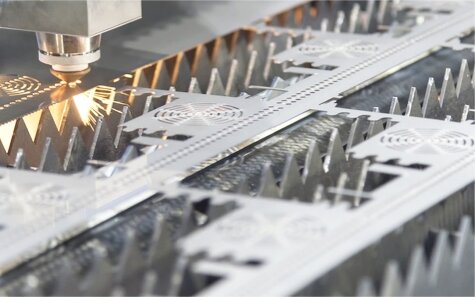
Understanding What Drives Laser Cutting Costs
Laser cutting costs are comprised of five key areas: material, machine time, setup, labor, and finishing. Each location offers options that can be adjusted to reduce waste and improve efficiency.
재료 두께 및 유형
Material thickness affects both cutting speed and energy use. Cutting a 3 mm stainless steel sheet can take almost twice as long as cutting a 1.5 mm sheet. This extra time increases power use and raises the cost per part.
Different metals also behave differently under the laser. Stainless and carbon steel cut with steady results, while aluminum and copper reflect more light. These metals often need higher power or special gases. Choosing the right mix of thickness, strength, and cut speed is typically the most effective way to reduce costs.
Design Complexity and Cutting Time
Complex shapes slow the machine. Every sharp angle, pierce, or tiny hole makes the laser stop and reposition. A smooth path with clean curves enables the head to move more quickly. This can improve productivity by up to twenty-five percent.
It also helps to avoid overlapping lines or repeated features in the CAD file. Even one double-cut line wastes both time and gas.
Tolerances matter too. Very tight tolerances can extend the cycle time and may require additional finishing. When possible, choose functional tolerances — just precise enough for the part to work as intended.
Order Volume and Setup Cost
Setup, programming, and calibration take nearly the same amount of time whether you produce one part or one thousand. Large batches spread these fixed costs across more units, which lowers the cost per part.
For small orders, you can still save by grouping parts that share the same material and thickness. If the schedule allows, flexible planning also helps avoid rush fees.
Design Optimization: The Biggest Cost Lever
Design is where most savings appear. Innovative shapes, good nesting, and standard features all reduce laser travel, scrap, and setup time.
지오메트리 단순화
Complex shapes raise cost. You can replace tiny holes with larger cutouts when the function allows. You can round inner corners instead of keeping sharp edges. You can also align part edges so that multiple parts share the same cut line.
When two parts share a border, the laser cuts that edge only once, rather than twice. This small change can reduce machine time by ten to fifteen percent during large production runs.
Boost Material Yield Through Efficient Nesting
Nesting arranges parts on a sheet to use as much material as possible. Modern nesting software can increase material use by 12 to 20 percent. This improvement brings direct material savings.
Grouping parts by size or thickness also shortens travel time. If the parts require a brushed finish, you can maintain a clean and consistent look by keeping the grain direction the same.
Standardize Features and Tolerances
Each unique slot or hole size requires a separate setup. When you standardize these features across different parts, you reduce programming time and make inspection easier.
Using the exact hole sizes, tab widths, and relief shapes also helps 굽힘 그리고 집회 proceed more efficiently. Balanced tolerances — tight where needed and flexible where possible — allow the laser to cut at higher speeds without compromising function.
A helpful note: reducing tolerances by even one tenth of a millimeter can slow cutting speed by up to ten percent on thin metals. Save high precision for the areas that truly need it.
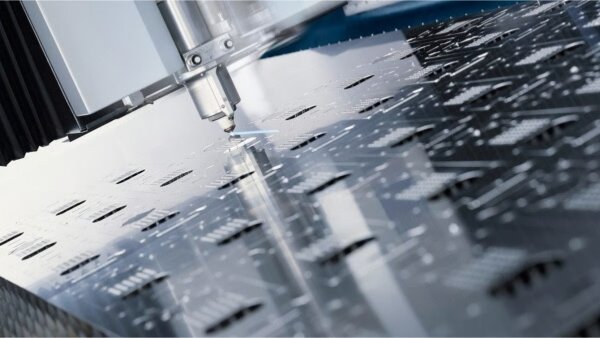
Innovative Material Choices and Thickness Planning
Material choice affects more than strength or appearance. It also shapes laser cutting speed, cost, and lead time. Picking the right type and thickness can lower both time and expense.
Choose Readily Available Stock
Custom sheet sizes or unusual alloys often need special orders. These orders take longer to arrive and usually cost more. Standard stock that is already in your supplier’s inventory removes these delays and reduces scrap.
Standard sheet sizes such as 1000 × 2000 mm or 1220 × 2440 mm are easier to source. They also allow better nesting. Avoiding uncommon sizes helps you improve material use and speeds up the overall process.
Balance Strength and Efficiency
Thinner sheets cut faster, but they can lose stiffness. Adding a small flange or rib often gives the same strength with less material. This simple change can reduce cost while keeping the part strong.
For heat-sensitive metals, choose grades that stay flat during cutting. Warped sheets create accuracy issues and lead to rework.
Plan Material Orders Strategically
When different projects use the same material and thickness, group those orders, and buying in bulk often reduces the material price by five to ten percent. It also helps the supplier plan their own nesting across orders.
Bulk orders save more than money. They cut logistics time and make storage easier. Planning material needs in batches with your supplier is one of the most effective long-term methods for cost savings.
Process Efficiency and Workflow Management
A well-designed part can still cost more than expected if the workflow is slow or disorganized. A smooth process sequence and smart machine usage ensure steady and cost-effective production.
Coordinate Cutting, Bending, and Welding Steps
Each step changes how the following one works. When you match laser paths with bend lines or weld seams, you remove extra clamping and reduce manual alignment.
부품에 다음이 필요한 경우 용접, you can add simple locating tabs or notches during the cutting stage. These features guide the fit-up and make the welds more consistent.
Keeping CAD data connected from cutting to bending and assembly also helps. A digital link across machines reduces translation mistakes and keeps all steps aligned.
Automate Repetitive Tasks
Digital quoting, automatic nesting, and CAM integration shorten the time spent on setup. Automated tools can estimate cutting time and cost in seconds.
Barcode or QR code tracking helps reduce handling errors. It also gives clear traceability through cutting, bending, welding, and 마무리 손질.
Maintain Continuous Machine Utilization
Laser machines deliver the best value when they stay running. Grouping jobs by material and thickness reduces setup changes and cuts downtime.
Simple habits, such as preloading the next sheet before the current one finishes, can increase daily output by ten to fifteen percent. Balanced scheduling protects the machine, keeps quality stable, and makes the total cost easier to predict.
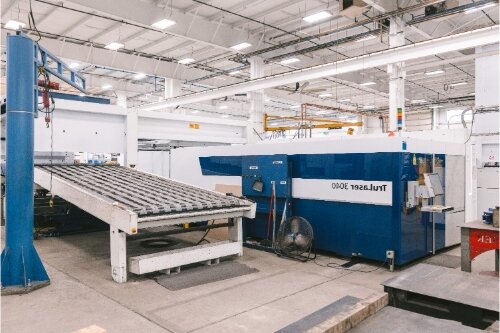
Collaborating with Your Laser Cutting Partner
Internal improvements are beneficial, but working closely with your fabrication partner can yield even greater gains. Good communication turns minor adjustments into significant cost and time savings.
Share Design Data Early
Sending CAD models early gives the engineering team time to review the design before production starts. They can suggest small changes — such as larger radii, different hole layouts, or improved tab placement. These adjustments can reduce cutting time by up to twenty-five percent.
Editable 3D files are better than PDFs. They enable direct CAM import, reduce programming errors, and maintain the original design intent.
Discuss Cost Scenarios and Alternatives
Instead of asking for one quote, review several cost options with your supplier. A slight change in thickness or tolerance can significantly reduce the overall price.
For example, switching from a 2.5 mm sheet to a 2.0 mm sheet may cut costs by about fifteen percent while still delivering the needed stiffness.
Build Long-Term Partnerships
A long-term supplier becomes more than a vendor. They start to work like part of your engineering team. They learn your standards, preferred tooling, and material habits.
This familiarity reduces setup time and speeds up the quoting process. It also helps them manage stock more efficiently, supporting your projects. Over time, this steady cooperation leads to smoother scheduling, more stable pricing, and shorter lead times.
Insight: Long-term manufacturing partners often achieve 10–20% cost savings compared to single-project suppliers due to repeat process familiarity and shared planning data.
결론
Reducing laser cutting cost does not mean lowering quality or choosing the cheapest option. It depends on understanding each decision — from CAD design to material choice to workflow — and using that knowledge to work more efficiently.
Design for easy manufacturing. Select materials that strike the right balance between strength and cutting speed. Connect each fabrication step so the work moves forward without delays. These small changes add up. Many projects see total cost drop by fifteen to thirty percent with the proper adjustments.
If your business relies on precise sheet metal parts, this is an ideal opportunity to review your current process and explore more efficient methods for producing them.
At Shengen, our engineers help global customers lower manufacturing costs while keeping tight tolerances and fast lead times. Please send us your drawings or 3D models for a free DFM review and cost analysis.
자주 묻는 질문
What factors affect the cost of laser cutting the most?
The main cost drivers are material type, material thickness, design complexity, cutting time, and order size. Thicker sheets require more time to cut and consume more power. Complex shapes increase machine movement. Small batches carry a higher cost per part because setup time is spread over fewer units.
Does material choice really make a big difference in laser cutting price?
Yes, the material choice has a significant impact on the cost. Aluminum and copper reflect more light and need higher laser power. Mild steel and stainless steel cut faster and cleaner.
How does design influence laser cutting costs?
Design has the most substantial impact on cutting efficiency. Small holes, tight radii, and complex shapes slow the laser. Shared edges, smooth curves, and consistent feature sizes reduce material waste and shorten machine time.
Is it more cost-effective to outsource laser cutting or purchase your own machine?
The answer depends on your volume. Purchasing and maintaining a laser cutter requires a significant investment, skilled operators, and ongoing service costs. For most companies with mixed or low-volume production, outsourcing to a fabrication partner is usually more cost-effective.
Do tight tolerances always increase cost?
Yes. Tighter tolerances reduce cutting speed and often require extra finishing steps. Using functional tolerances — tight only where the part needs it — keeps cost under control while protecting quality.
안녕하세요, 저는 케빈 리입니다

지난 10년 동안 저는 다양한 형태의 판금 제작에 몰두해 왔으며 다양한 워크숍에서 얻은 경험에서 얻은 멋진 통찰력을 이곳에서 공유했습니다.
연락하세요

케빈 리
저는 레이저 절단, 굽힘, 용접 및 표면 처리 기술을 전문으로 하는 판금 제조 분야에서 10년 이상의 전문 경험을 갖고 있습니다. Shengen의 기술 이사로서 저는 복잡한 제조 문제를 해결하고 각 프로젝트에서 혁신과 품질을 주도하는 데 최선을 다하고 있습니다.


